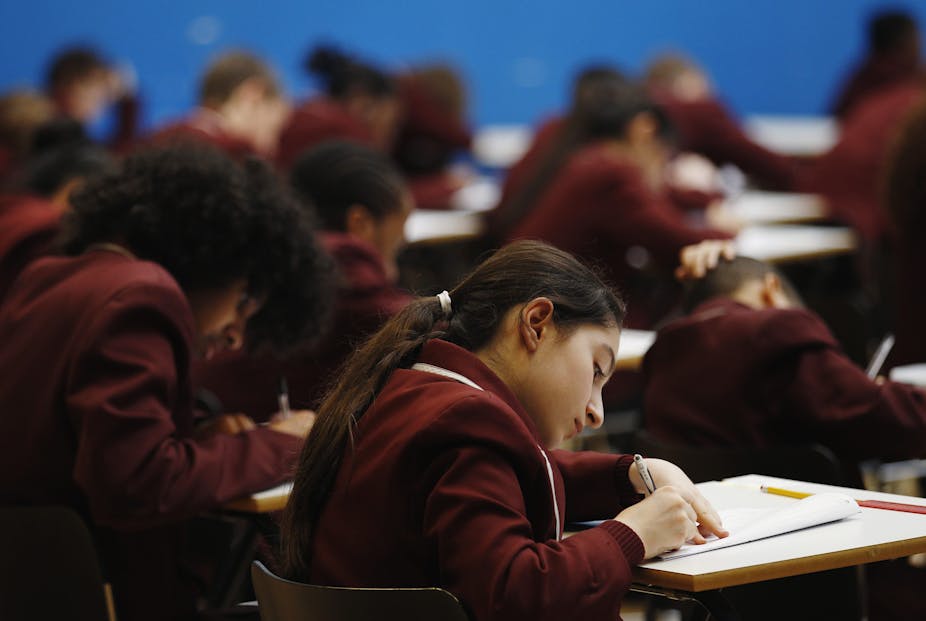Students from some ethnic minority groups in Britain such as Chinese, Indian, Black African and Bangladeshi have significantly improved their grades over the last two decades.
They are achieving higher than the national averages, pointing to improving social mobility from ethnic groups who have traditionally struggled to get good grades at GCSE.
In a recent report from its new Commission on Inequality in Education, the Social Market Foundation underlines different kind of inequality in educational achievement. Only 40% of pupils who are eligible to receive free school meals achieve five A* to C grades at GCSE, girls get better grades than boys at GCSE and there is a divide between London and the North of England.
But the report also highlights how educational performance has varied significantly across different ethnic minority groups over the last few decades:
Over the last three decades, ethnic inequalities have altered radically but a similar level of unevenness remains. While Asian students born in 1970 performed poorly, Chinese, Indian and Bangladeshi born in 1997/98 were the best performers. White students have fallen from over-performers to under-performers on average over the three decades.
Talking about minorities in 2001, Lee Jasper, policy advisor on equalities to the former mayor of London Ken Livingstone, said that the: “islands of exclusion imprison within them boundless talent and creativity, confined by sheer walls of discrimination and lack of opportunity”.
It seems that this boundless talent and creativity is gradually finding expression in educational improvement among ethnic minority students who are showing their resilience to the barriers they face. A 2015 report published by the Department for Education (DfE) mentioned some possible sources of this resilience.
Top of the class
Ethnic minority children face specific challenges, including racial and ethnic marginalisation, huge concentrations of minority ethnic groups in deprived areas, language and cultural barriers, poverty, and a lack of general social capital. In spite of this, some groups of ethnic minority children appear to be performing much better than white students. The latest GCSE data in the graph below shows how well Chinese and Asian students are now doing – although it’s clear that Pakistani students are still lagging behind.
Even students eligible for free school meals from Indian, Chinese and Bangladeshi backgrounds are performing higher than white students on free school meals, as the graph below shows.
Evidence to MPs and in the London borough of Lambeth has identified white working-class students as the lowest performing in their peer group.
Impressive resilience
These reports clearly suggest that, in spite of the multiple barriers and challenges faced by their communities, there are some support structures available to ethnic minority students to do well in schools, which are perhaps not available to disadvantaged white children.
Students from most black and minority ethnic groups appear to be more resilient to the pressures of poverty on educational attainment. Although many interventions and efforts on the part of the government and schools have contributed to these students’ improved educational attainment, according to DfE: “the evidence suggests that the relative contribution of schools is smaller than that of parental, family and student factors.”
Attitudes, behaviour, aspirations and financial contributions by parents of black and minority ethnic students appear to be playing a significant role raising their children’s aspirations and attainment.
Community networks and close-knit family structures appear to make positive contributions to students’ education – often the parents are aware of where the child is and what the child is doing. Many minority ethnic parents are also prepared to make sacrifices to pay for private tutoring of their children despite limited resources.
This supportive home and community environment improves resilience and adds to the students’ aspirations. Oxford researcher Steve Strand, has argued that pupils’ educational aspirations are a key factor in explaining why ethnic minorities from lower socio-economic groups have higher attainment than disadvantaged white pupils at age 16.
Some ethnic minority children may start school with limited English vocabulary as it is not spoken in their homes, but once in school they develop language and other learning skills quickly and then they appear to make more rapid progress in attainment compared to their white counterparts.
Family and community involvement has been identified as a significant factor in improving both students’ resilience and their aspirations. Whatever the ethnic group of students, there is a real need for schools and the government to engage parents and communities in their children’s learning to maximise the benefits of interventions aimed at raising their performance.

